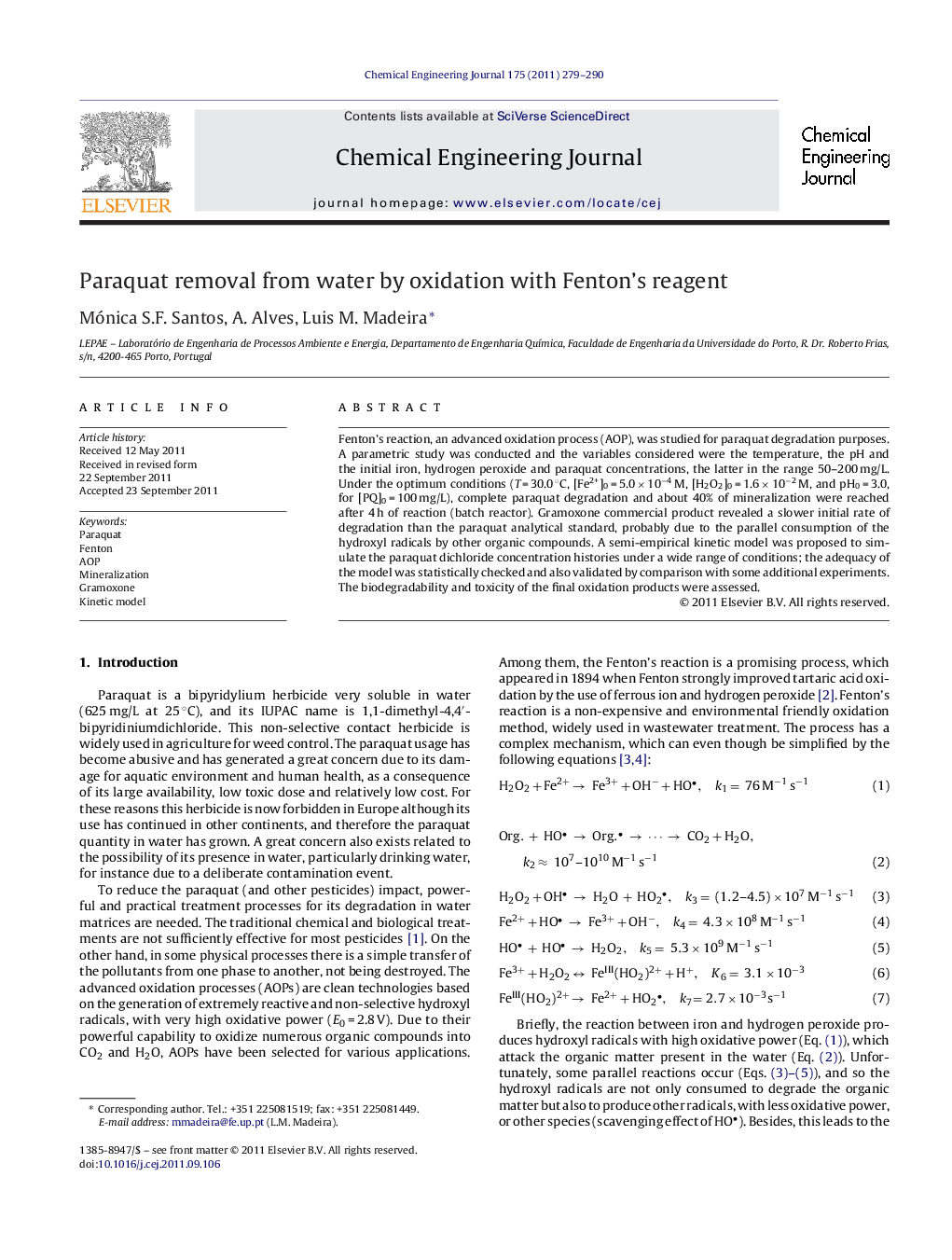| Article ID | Journal | Published Year | Pages | File Type |
|---|---|---|---|---|
| 150983 | Chemical Engineering Journal | 2011 | 12 Pages |
Fenton's reaction, an advanced oxidation process (AOP), was studied for paraquat degradation purposes. A parametric study was conducted and the variables considered were the temperature, the pH and the initial iron, hydrogen peroxide and paraquat concentrations, the latter in the range 50–200 mg/L. Under the optimum conditions (T = 30.0 °C, [Fe2+]0 = 5.0 × 10−4 M, [H2O2]0 = 1.6 × 10−2 M, and pH0 = 3.0, for [PQ]0 = 100 mg/L), complete paraquat degradation and about 40% of mineralization were reached after 4 h of reaction (batch reactor). Gramoxone commercial product revealed a slower initial rate of degradation than the paraquat analytical standard, probably due to the parallel consumption of the hydroxyl radicals by other organic compounds. A semi-empirical kinetic model was proposed to simulate the paraquat dichloride concentration histories under a wide range of conditions; the adequacy of the model was statistically checked and also validated by comparison with some additional experiments. The biodegradability and toxicity of the final oxidation products were assessed.
Graphical abstractFigure optionsDownload full-size imageDownload as PowerPoint slideHighlights► The dark Fenton's process was studied for paraquat degradation in a wide range of conditions. ► A semi-empirical kinetic model was successfully employed to simulate paraquat degradation performance. ► Nearly all the pesticide was degraded after only 1 h, with 60% of mineralization after 4 h of reaction.
